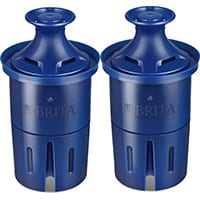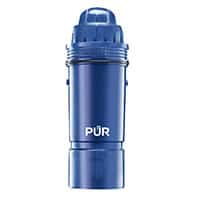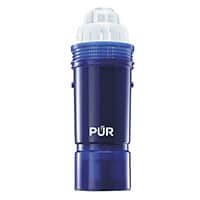Looking for a water filtration system that results in better tasting water and better contaminant removal? Water is water, right? Maybe not.
In this guide, we’re looking at ZeroWater vs. Brita vs. PUR to find out which filtration system yields the best water.
Let’s dive right in.
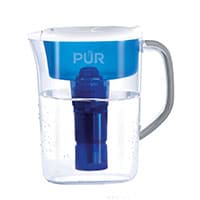
- Filter Speed: 0.80 cups/min
- TDS: 511 ppm
- Taste Score: 69%
- Pitcher Capacity: Varies
- Price: $
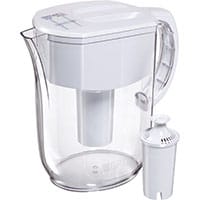
- Filter Speed:1.05 cups/min
- TDS: 396 ppm
- Taste Score: 83%
- Pitcher Capacity: Varies
- Price: $
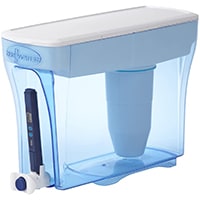
- Filter Speed: 0.80 cups/min
- TDS: 0 ppm
- Taste Score: 60%
- Pitcher Capacity: Varies
- Price: $
If you’d rather watch our review video than read we’ve got that below:
Performance
Overall performance of any water filter comes down to three main factors.
- Contaminant Removal
- Taste Test
- Filtration Speed
For the most accurate performance results, we rely on a combination of these tests to evaluate the quality of water from each filter system.
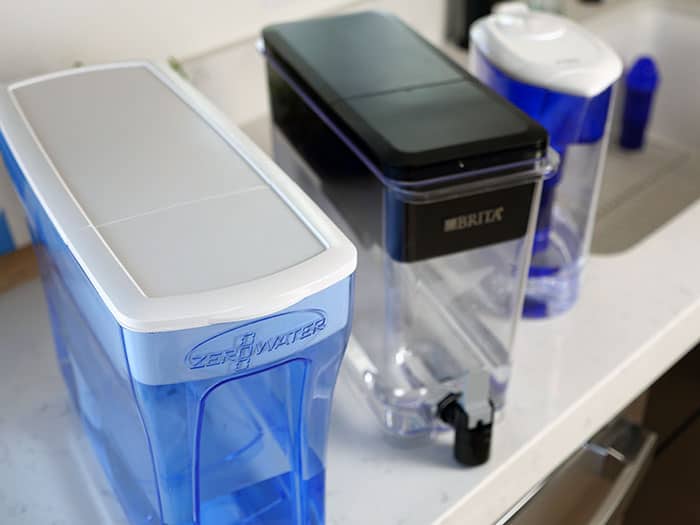
1. Contaminant Removal
When we’re looking specifically at contaminant removal, there are a number of different minerals, chemicals, and other particulates that come into consideration.
The table below outlines all of the contaminants that each filter removes.
ZeroWater has one style of filter, while Brita and PUR both offer two different systems, with different levels of filtration.
| Contaminant | ZeroWater | Brita Longlast Filter | Brita Standard Filter | PUR Lead Reduction Filter | PUR Standard Filter |
|---|---|---|---|---|---|
| Antimony | 97% | Unknown | Unknown | Unknown | Unknown |
| Arsenic | 93% | Unknown | Unknown | Unknown | Unknown |
| Asbestos | 95% | Yes | No | No | No |
| Atenolol | Unknown | No | No | Yes | Yes |
| Atrazine | Unknown | No | No | Yes | Yes |
| Barium | 98% | Unknown | Unknown | Unknown | Unknown |
| Benzene | Unknown | Yes | No | Yes | Yes |
| Bisphenol A | Unknown | No | No | Yes | Yes |
| Cadmium | 99.9% | Yes | Yes | Yes | Yes |
| Carbamazepine | Unknown | No | No | Yes | Yes |
| Carbon Tetrachloride | Unknown | No | No | Yes | Yes |
| Chlorine (Taste and Odor) | 95% | Yes | Yes | Yes | Yes |
| Chromium | 99.9% | Unknown | Unknown | Unknown | Unknown |
| Cobalt | 99% | Unknown | Unknown | Unknown | Unknown |
| Copper | 99% | No | Yes | Yes | Yes |
| Cyanide | 31% | Unknown | Unknown | Unknown | Unknown |
| Estrone | Unknown | No | No | Yes | Yes |
| Flouride | 41% | Unknown | Unknown | Unknown | Unknown |
| Herbicides | Unknown | No | No | No | No |
| Iron | 98% | Unknown | Unknown | Unknown | Unknown |
| Lead | 97% | Yes | No | Yes | No |
| Manganese | 98% | Unknown | Unknown | Unknown | Unknown |
| Mercury | 96% | Yes | Yes | Yes | Yes |
| Nitrate | 74% | Unknown | Unknown | Unknown | Unknown |
| Nitrite | 81% | Unknown | Unknown | Unknown | Unknown |
| Nonylphenol | Unknown | No | No | Yes | Yes |
| Particulates (Class I) | Unknown | Yes | No | Yes | Yes |
| Selenium | 98% | Unknown | Unknown | Unknown | Unknown |
| Silver | 81% | Unknown | Unknown | Unknown | Unknown |
| Sulfide | 55% | Unknown | Unknown | Unknown | Unknown |
| Thallium | 99% | Unknown | Unknown | Unknown | Unknown |
| Uranium | 99% | Unknown | Unknown | Unknown | Unknown |
| Zinc | 98% | No | Yes | Yes | Yes |
| 2,4-D | Unknown | No | No | Yes | Yes |
| Linuron | Unknown | No | No | Yes | Yes |
| Industrial Pollutants | Unknown | No | No | No | No |
| Tetrachloroethylene | Unknown | No | No | Yes | Yes |
| TCEP | Unknown | No | No | Yes | Yes |
| Cyst (Parasites) | Unknown | No | No | Yes | Yes |
| Nominal Particulate | Unknown | No | No | Yes | Yes |
In addition to contaminant removal, we also consider the number of total dissolved solids removed from the water (or TDS for short). This number can be found by testing water using a TDS meter.
- The higher the number, the more dissolved solids remain in the water.
- The lower the number, the closer it is it completely purifier water.
NOTE: TDS does not always equate to water quality. A rating of 0 does not necessarily mean that the water is flawless, just as a slightly higher rating does not mean that the water is poor quality.
Did you know that most water filters today cannot decipher between good minerals and harmful contaminants? They work to clear the water of anything that isn’t purely water.
This explains how a score of “0” isn’t always required to have pure and good tasting water. Good minerals naturally found in water can raise the TDS score as well as other naturally occurring particles, like salinity in softened water or healthy minerals in mineral water.
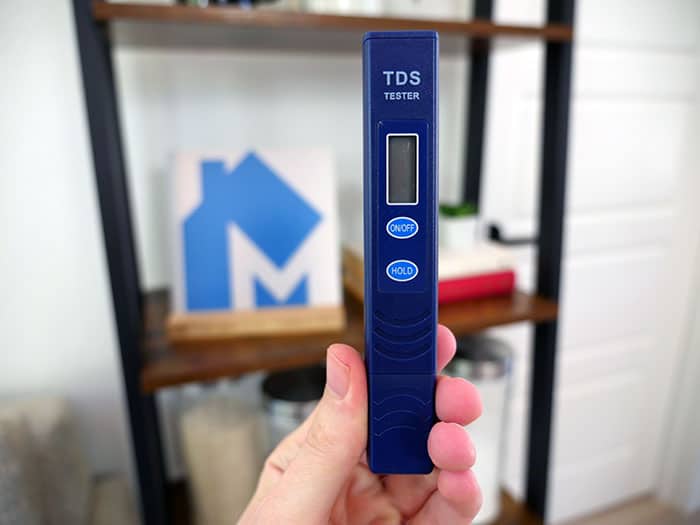
In the way that good minerals can raise the score, there are also certain additives that could generate a TDS score of 0 and be in the water, undetected.
Our Results
To perform our TDS test, we used a meter and ran the water through each filter three times.
For the sake of good science and (and good economics), we also tested an off-brand filter in the PUR filter to see if third-party filters could pass the same standards.
Here were our findings:
NOTE: PPM stands for “parts per million”
PUR
manufacturer filter
- Pre-filtered: 542 ppm
- 1st Pour: 530 ppm
- 2nd Pour: 555 ppm
- 3rd Pour: 511 ppm
PUR (3rd party)
3rd party filter; Aquacrest
- Pre-filtered: 542 ppm
- 1st Pour: 509 ppm
- 2nd Pour: 498 ppm
- 3rd Pour: 405 ppm
Brita
manufacturer filter
- Pre-filtered: 542 ppm
- 1st Pour: 495 ppm
- 2nd Pour: 428 ppm
- 3rd Pour: 396 ppm
ZeroWater
manufacturer filter
- Pre-filtered: 542 ppm
- 1st Pour: 0 ppm
- 2nd Pour: 0 ppm
- 3rd Pour: 0 ppm
In our previous PUR vs. Brita comparison we had noted that taste improved dramatically by running additional water through each filter. In line with that thinking, we wanted to test the TDS at varying levels of filter “flushing”.
- 1st Pour – This was done with no flushing. We simply installed the filter, filled up the reservoir, let it filter, then immediately test the water.
- 2nd Pour – For this, we filled the reservoir several times to lightly flush the filter.
- 3rd Pour – For this test, we filled the reservoir numerous times, running several gallons of water through each filter.
For reference, here were the PPM levels of some of the other unfiltered water sources around our property.
Guest House Tap
542 ppm
Main House Tap
580 ppm
Refrigerator Door
442 ppm
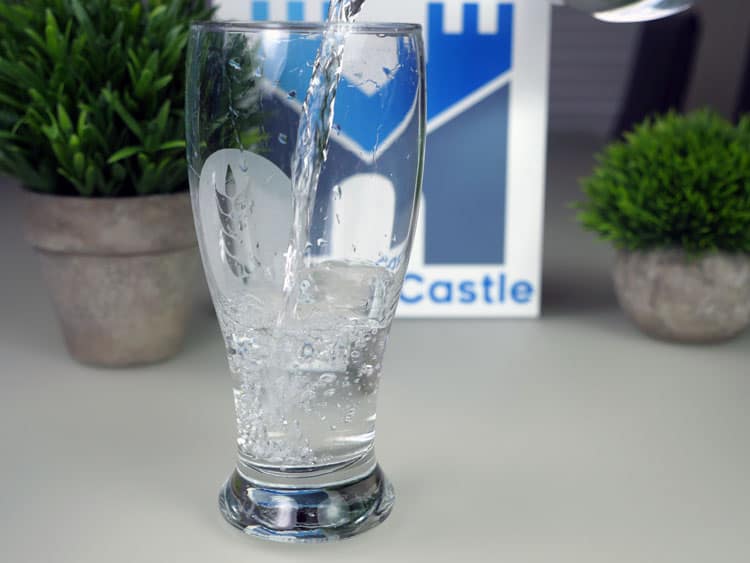
Our main house uses a water softener system, which explains the higher TDS levels. Our refrigerator is a 2019 GE Monogram.
2. Taste Test
Beyond filtering out contaminants, taste is another huge factor that plays into better wter filtration.
While there is no truly objective way to test how good water tastes, we did have a few ideas…
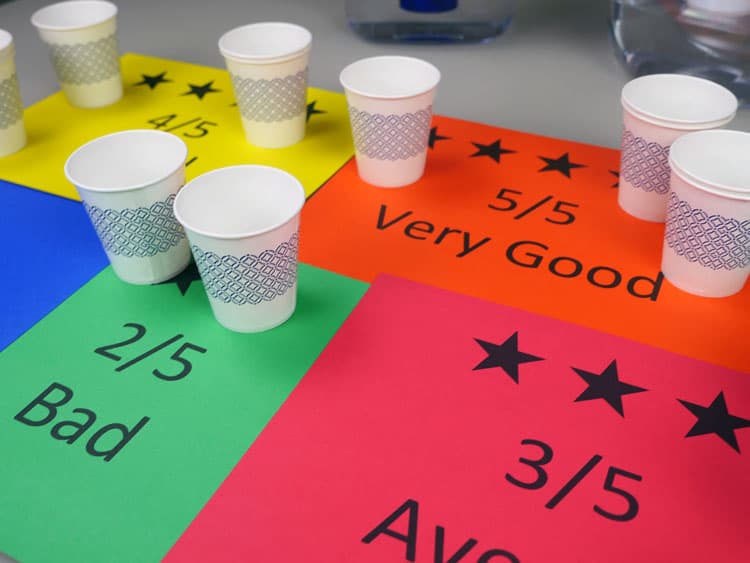
To perform our taste test, we blindly offered a small group of individuals water from each filtered source, PUR vs. Brita vs. ZeroWater vs. Tap and asked them to score the water, based solely on taste and personal preference.
Each cup of water was poured into a paper cup and unmarked (except for a notation on the bottom of the cup so I could tell which was which when compiling the data).
Here were the results.
Brita
83%
PUR
69%
ZeroWater
60%
Unfiltered Tap
51%
Overall, the individuals made the collective decision that Brita water tasted the best, closely followed by PUR.
ZeroWater wasn’t preferred by most of our testers. On average testers rate it lower than both PUR and Brita.
Several testers remarked that the water tasted pure, but was so different than what they were used to that they didn’t like it.
3. Filtration Speed
Filtration speed is the last factor we considered when scoring these water filters.
What is the filtration speed?
This is defined as the amount of time it takes for the water to go from “unfiltered” to filtered, pure, and ready to drink.
PUR
0.80 cups/min
Brita
1.05 cups/min
ZeroWater
0.80 cups/min
Of course, filter speed isn’t everything, but we did think it was relevant to include to give you an idea of how long it takes to get your purified water.
Design Overview
All three of these brands are made up of a two-part system:
- The Pitcher
- The Filter
The Pitcher
PUR, Brita, and ZeroWater all have a variety of different pitcher sizes and styles. Some are top-pour models, while other are larger tank-styles with a flip valve at the bottom.
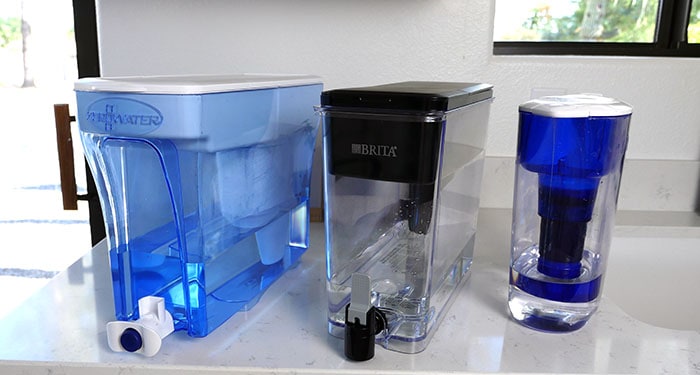
Regardless of the style, each pitcher uses the same respective filter.
PUR & Brita Filters
Both Brita and PUR have two different types of filters available and ZeroWater has one style.
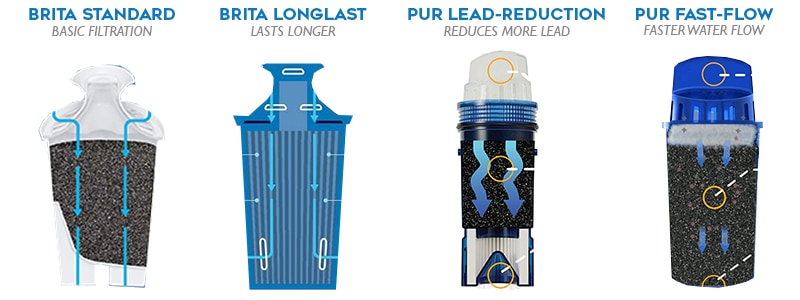
The Brita system works with the Standard Filter or the Longlast filter. Similarly, the PUR system works with the Basic Filter or the Lead Reduction Filter.
All four of these filters above are basically 2-stage filters. Unfiltered water enters the filter, flows through a variety of fine mesh or another particle barrier, and then through a carbon particle barrier.
ZeroWater Filter
Unlike the 2-stage filters, ZeroWater has a 5-stage filter. There are more layers, but the same basic concept applies—a fine particulate layer up top and a larger carbon filter (shown as red below) on the bottom.
The exact layers break down as:
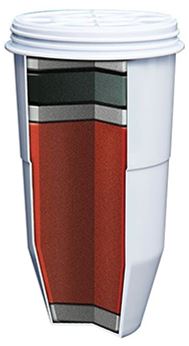
- Coarse filter screen: captures fine particles and sediment
- Foam distribution: disperses water evenly across the entire width of the filter
- Carbon layer: filters out additional contaminants and helps improve the taste
- Ion exchange resin: removes foreign ions from the water
- Fine screen: removes ultra-fine particles
Which water filter should you buy?
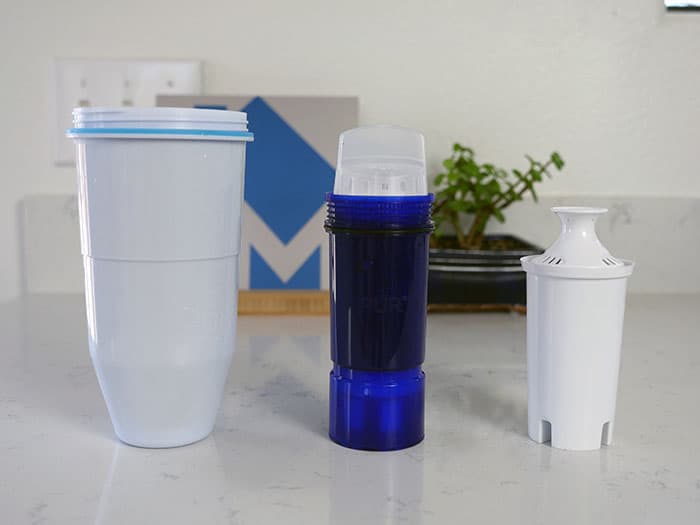
I would recommend Brita to people who:
- Want to spend less money on filters – At the time of our review, Brita filters generally seemed to be less expensive than both PUR and ZeroWater.
- Want the best tasting water – based on our taste tests, Brita water tastes the best (according to our taste testing panel). It was far from perfect when it comes to TDS, but as far as taste goes, Brita is #1.
Click here to learn more or to buy the Brita water filter.
I would recommend PUR to people who:
- Want a pitcher that removes more stuff – Number by number, the PUR filter does remove a larger range of contaminants. If you suspect your water source is more susceptible to these contaminants then PUR would be a better choice.
- Your water source isn’t high on TDS – PUR was the worst when it came to removing dissolved solids. If you live in a place with hard water or otherwise have a high TDS I would suggest not getting PUR.
Click here to learn more or to buy the PUR water filter.
I would recommend ZeroWater to people who:
- Want to purify down to 0 TDS – If the number of total dissolved solids is the most important issue, it’s hard to beat the performance of ZeroWater in terms of TDS alone. This filter blew the others right out of the water, taking TDS down to 0 every single time we tested.
- You’re okay getting used to new tasting water – removing 100% of TDS means the water is going to likely taste very different compared to what you’re used to. As a result, it can take a while to get used to the new taste of the ZeroWater.
Click here to learn more or to buy the ZeroWater filter.
Updates
- June 12, 2020 – Updated our taste tests following the conclusion of our expanded taste test data set. With these updates Brita’s score increased slightly, PUR’s decreased slightly, and Zero’s increased moderately. Also, cleaned up a few minor formatting and wording mistakes.
- June 8, 2020 – Initial version of the page was published.



